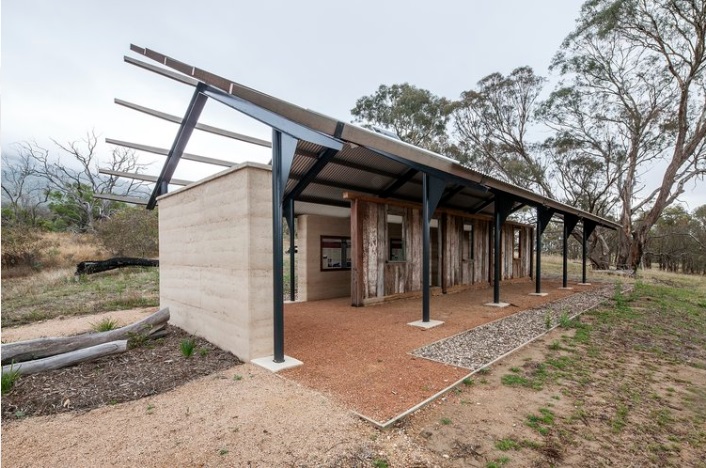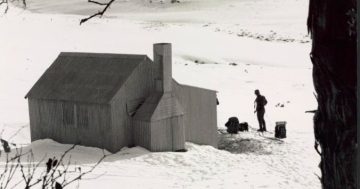
Timber slabs from the old Gudgenby Homestead had been stored in a container for several decades, awaiting a rebirth. Photo: Supplied.
October 2024 marks the 40th anniversary of Namadgi National Park and one small event early in the month will showcase the painstaking work Kosciuszko Huts Association (KHA) has undertaken to preserve the historic buildings in the 106,095-hectare wilderness.
Simple in structure, the many huts and homesteads, fences and yards that remain in Namadgi serve as tangible reminders of its rich pastoral history, which dates back to the 1830s, telling stories of the many challenges the area’s people faced, including isolation and a harsh climate.
But of the 31 scattered huts – restored or rebuilt – it’s the remnants of the old Gudgenby Homestead that form the centrepiece of the celebrations of all things Namadgi, at least for KHA, on Saturday, 5 October.
An open day at Gudgenby Shelter, a short walk from Namadgi National Park Visitor Centre in Tharwa, will allow locals and visitors to experience the Gudgenby Homestead project, endearingly referred to as “Gudgenby in a Box”, which echoes the history of settlement in the Gudgenby Valley.
Winner of the 2014 ACT Institute of Australian Architects JS Murdoch Award for Heritage Architecture, the shelter, set at the base of Mount Tennent, was constructed using timber slabs saved from the original Gudgenby Homestead, one of the ACT’s oldest European buildings and one that sheltered pioneer families from 1845 to 1964.
The hand-cut timber slab hut was originally constructed in 1845 by Scottish immigrant Charles McKeahnie and dismantled in 1964 by then-owner Bill Bootes and historian Neville Locker.
The KHA later had the hut’s timber slabs stored in a shipping container, a steel box, which is how the project received the name “Gudgenby in a Box”.
Now, almost 50 years later, the Gudgenby Homestead once again stands tall, having been reconstructed, in part, using the salvaged materials of the original structure and rebuilt, incorporating rammed earth, within the new shelter.
But there’s a modern aspect to the building, with interpretive panels and audio stories telling tales of the early settlers and QR codes embedded in the walls to allow visitors to pinpoint locations of other pre-1913 structures in the park using Google maps.
According to KHA president Pip Brown, the October open day will run from 10 am to 3 pm and will include photo displays of huts and homesteads in Namadgi and Kosciuszko national parks.
“People will have the opportunity to meet KHA volunteers and find out what we do, how to join and get involved,” she said.
KHA is one of two community voluntary associations formed to assist with the conservation, management and reconstruction of more than 200 historic huts, buildings and structures across the National Heritage-listed Australian Alps National Parks and Reserves of the ACT, NSW and Victoria.
While many of the huts are associated with past periods of pastoralism, many are also linked to mining, surveying, logging and milling, hydro-electric development, scientific research, conservation and park management, or recreation such as skiing, bushwalking and fishing.
For more information on KHA and its activities, visit its website here.
Original Article published by Edwina Mason on About Regional.













